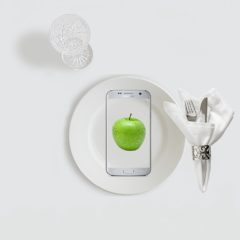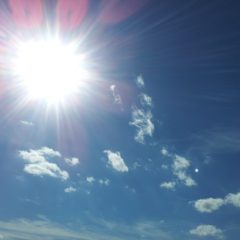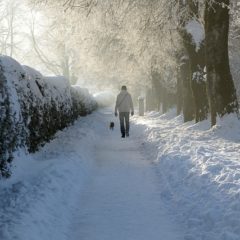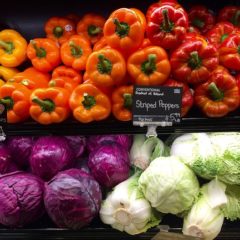Acupuncture is an incredible natural healing tool; it’s effective, safe, and drug-free. However, the reality is that it involves needles, and for some people that’s a deal breaker. To the needle-shy, explanations about how tiny the needles are or how they’re painlessly inserted don’t mean a thing. For them, acupuncture is simply not an option.
Needle phobia is a real thing, and many people who shy away from being poked actually welcome the idea of healing through Chinese medicine—just not the needles. It’s important to understand why acupuncture works, and how stimulating certain acupuncture points can affect the healing 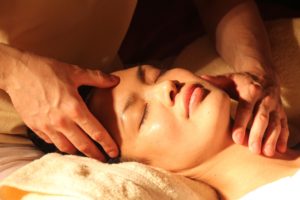 process, as well as options that don’t involve needles. Research on the physiological impact of acupuncture—or point stimulation—has documented that it increases circulation to the area treated, decreases inflammation, alters brain chemistry to reduce pain and increase feelings of well-being, and regulates hormones.
process, as well as options that don’t involve needles. Research on the physiological impact of acupuncture—or point stimulation—has documented that it increases circulation to the area treated, decreases inflammation, alters brain chemistry to reduce pain and increase feelings of well-being, and regulates hormones.
If you’re needle-shy however, and don’t want to miss out of what acupuncture has to offer, there’s good news. Acupuncture is just one tool under the healing umbrella that we call Chinese medicine. There are a number of healing methods that are based on Chinese medical theory that don’t involve being stuck with needles; some directly stimulate acupuncture points while others are more indirect. Here are a few that you may want to try:
-Think about acupressure. Rather than using needles, your practitioner uses finger placement to apply pressure to chosen acupuncture points. Generally pressure is applied to a point for a minute or two. Acupressure is based on the same theories, energetic pathways, and points as acupuncture, and can be an effective alternative.
-Asian bodywork may also be a good option for you, especially if you suffer from aches and pains. Tui Na is a hands-on therapy that involves massage and manipulation of parts of your body where you’re feeling pain. It works by increasing circulation and range of motion to the points, energetic, and tendinomuscular pathways that are involved. Another type of massage, Shiatsu, is Japanese in origin. Shiatsu combines massage with direct pressure to various acupuncture points to relieve pain and speed healing.
-If you watched the Olympics in Rio, you may have seen athletes with large purple circles on their skin. These are marks that come from cupping—where a vacuum has been created on the skin. Through the use of a small flame or a pump and gasket system, air is pulled out of glass or plastic cups, to the point that it breaks the small capillaries in the skin, leaving a purple bruise-like mark. While cupping may look painful, it actually is not; in fact most people find it pleasant and relaxing. Cupping effectively loosens sore or spastic muscles, increases circulation, calms the nervous system, and helps speed healing time.
-While not thousands of years old like acupuncture, microcurrent is being used in acupuncture-like treatments more and more frequently. Microcurrent involves the stimulation of acupuncture points using a device that delivers an electrical current for healing purposes. To the patient, it feels like a mild electrical tapping at the site that’s being treated. Microcurrent can be used instead of needles, but many practitioners also incorporate it into their acupuncture treatments for areas that are too tender to place needles, such as knuckles or under the eyes. Because microcurrent is safely and painlessly used around the face, it is an effective tool for cosmetic acupuncture treatments.
-An increasing number of practitioners of Chinese medicine are adding laser therapy to their healing arsenal. Similar to microcurrent, laser therapy is a way to stimulate acupuncture points—painlessly and effectively. Lasers used for this purpose are usually cold lasers—they don’t deliver heat. As a result, most patients report that they don’t feel anything during their treatments. That doesn’t mean that the laser isn’t working; research shows that laser treatments affect cell metabolism, speed up healing times, and are effective for a variety of health conditions.
–Chinese herbal therapy is a treatment strategy that stands on its own—it can be used independently of other treatments. Like acupuncture, herbal medicine is thousands of years old and is based on the same concepts of Chinese diagnosis and treatment. The concept behind herbal medicine is that each herb has inherent properties, and those properties are critical in choosing the right herbs to treat your particular condition. Because no single herb does everything, Chinese herbs are almost always combined into formulas, which can be fine-tuned as your condition changes
-In Chinese medicine, there is a direct connection between the foods we eat and our health. Similar to herbs, a Chinese dietary therapy plan is created to treat your specific condition and body type. In most cases, patients are not eating the foods that are optimal to the healing process, and frequently, diet is a prime contributor to their health problems. The Chinese think of food as medicine you eat three times a day, and while not as strong, foods have properties similar to herbs.
A word to the needle-shy: while acupuncture can be incredibly effective, it’s not the only way for you to experience Chinese medicine. Check with your local practitioner to find out what needle-free options they offer; you may be surprised.
